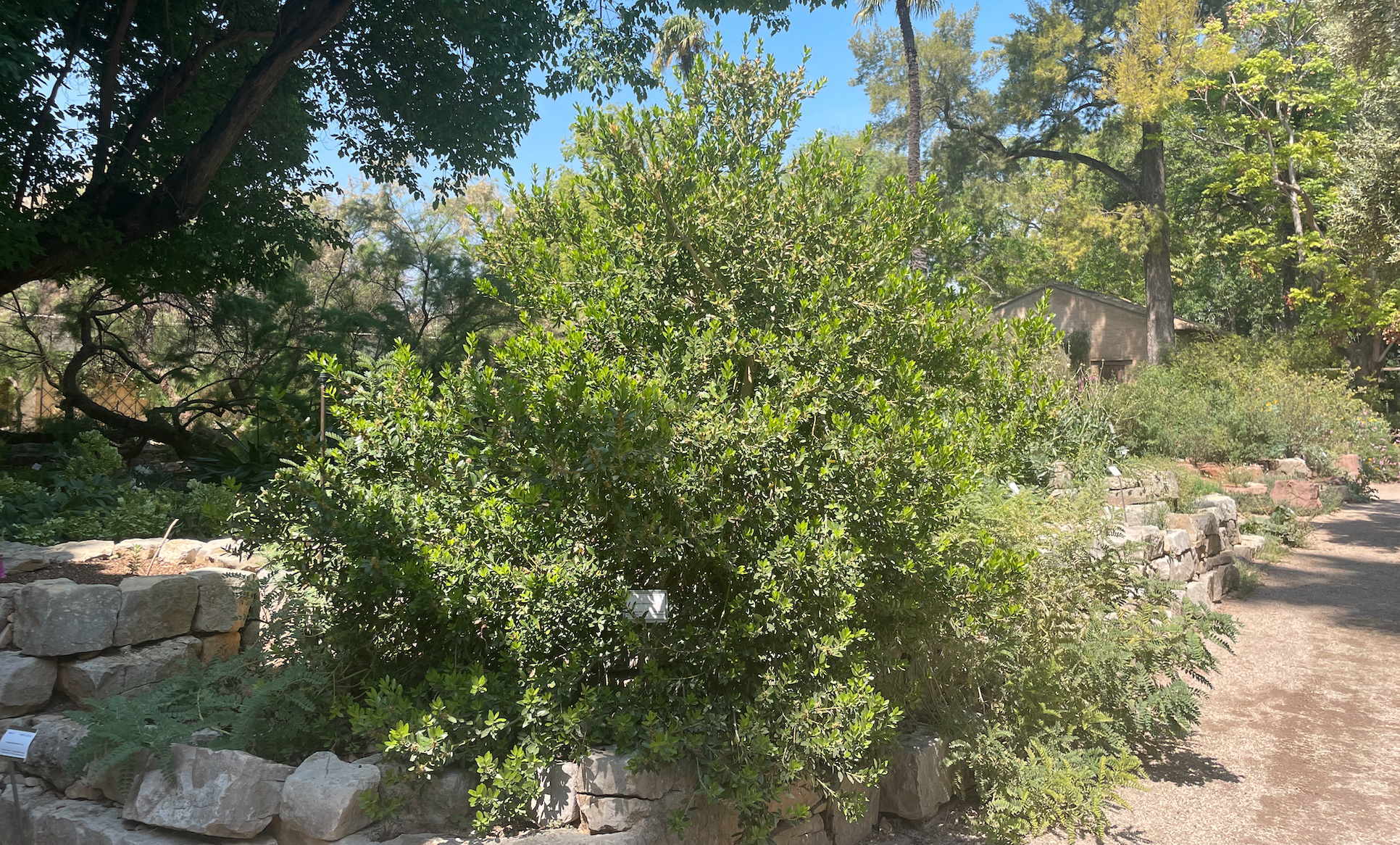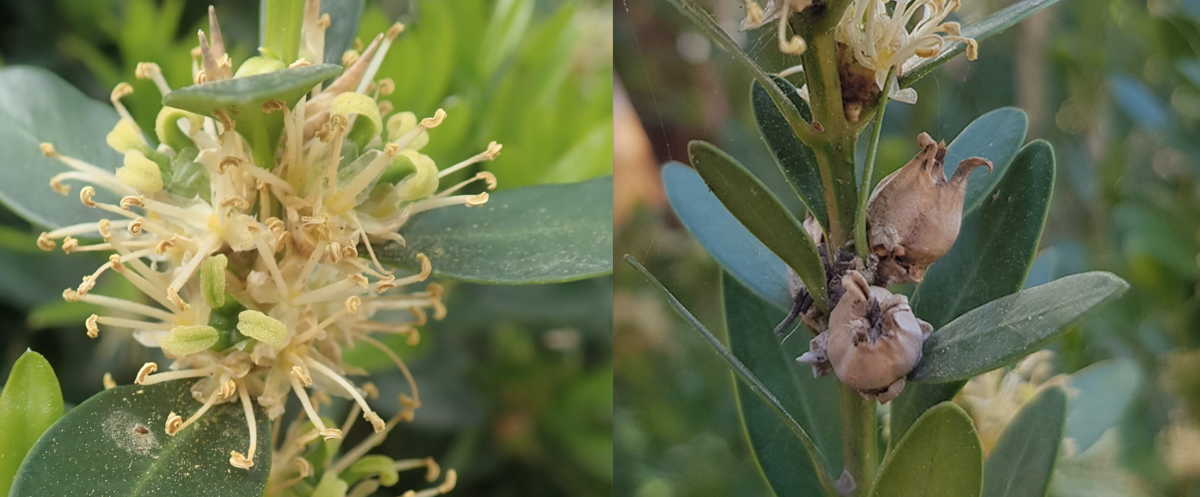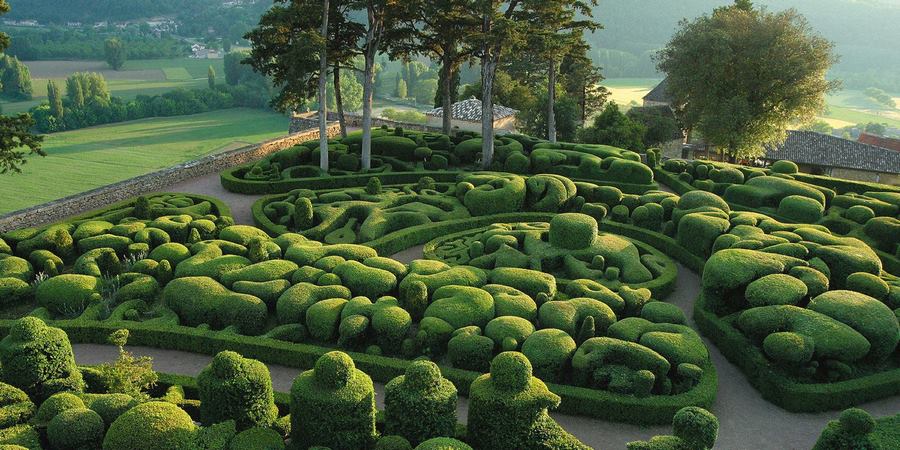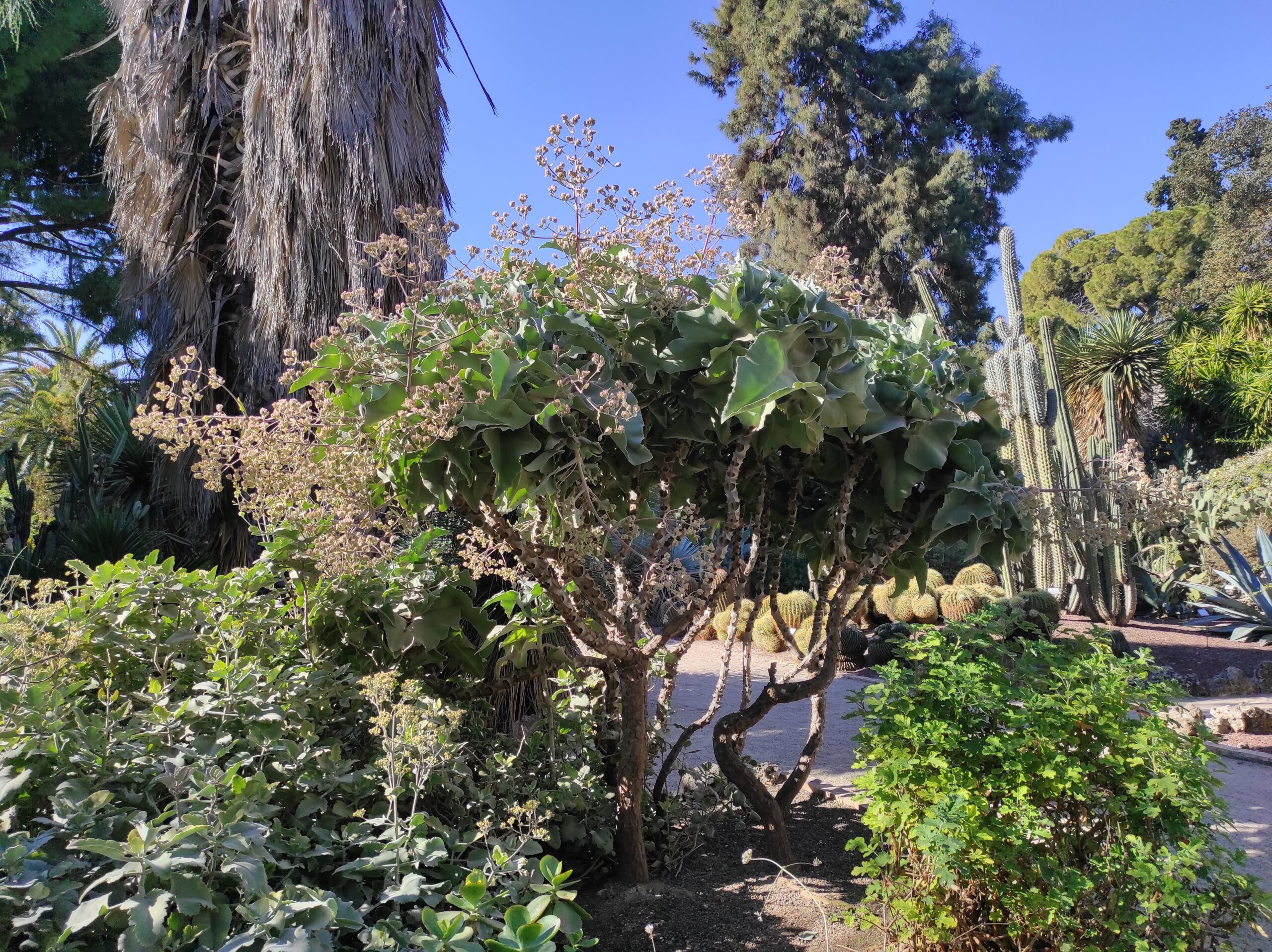From Mallorca to the Jardí Botànic, the boxwood of Mahón, an April plant

I'm sure you know the Spanish saying "en Abril, aguas mil" (meaning that in April it rains a lot), which is very popular and which this year does not represent the very dry month we are suffering. As you know, at the Jardí Botànic we work hard to meet the specific requirements of each species, and in return, they reward us with their majesty. In particular, just a few days before the end of April, we would like to highlight the Mahón boxwood (Buxus balearica Lam.), a very vigorous shrub that does not need a very showy flowering to show its beauty.
In the middle of spring we want to show you the species Buxus balearica, belonging to the genus Buxus and its family Buxaceae, a small family of evergreen shrubs. This species is commonly known as Mahon boxwood, referring to Mahón, capital of the island of Menorca, from where, unfortunately, it has become extinct.
It is a Mediterranean endemism in regression, since after studying the pollen and spores of the species, palynological studies have shown that this plant was very widespread in the past. However, during the 19th century, the large mature forests of Mahón boxwood, located in the Balearic Islands and Andalusia, were felled in order to charcoal their thick stems, causing a drastic reduction in their populations. For this reason, the species has been included in the Special Protection Regime in the catalogues of endangered species of both territories.

Botanical description
If we describe it botanically, the Mahon boxwood is an erect shrub with yellowish-brown bark, which usually measures between 1 and 3 metres in height. It stands out for its dense appearance caused by the leafy foliage on each of its many branches. Its entire leaves, broadly elliptical or oval, are dark green on the upper side and somewhat lighter on the underside, without trichomes or hairs, i.e. they are glabrous. They have a short petiole which extends into the internodes and are opposite each other. They are also leathery like most evergreens and are hard to the touch, but flexible.

In this species we can find both male and female flowers on the same individual, because the Mahon boxwood is a monoecious shrub with unisexual flowers. These flowers are gathered in small, inconspicuous axillary inflorescences, between 7 and 10 mm, where we find a female flower more or less centred, and several male flowers around it.
If we look closely at each of these inflorescences, we can see that, unlike the leaves, the flowers are sessile or shortly pedicellate. In particular, the male flowers are whitish-translucent and are made up of four triangular petals in the shape of a ship’s keel that go almost unnoticed before our eyes, four very prominent stamens and a non-functional ovary. On the other hand, the perianth of female flowers, or the structure that surrounds and protects the sexual organs of the flowers, contains six petals similar to the male ones, but which are maintained during fruiting. And speaking of the gynoecium, it is formed by a tricarpellar ovary that stands out because it is prolonged in three yellowish, short, straight, thick styles, each one ending in a long narrow stigma, which give colour to the female flower. And although its flowers are not very showy, this species gives off an unmistakable spring scent.
Finally, the spherical, trichorne fruit is notable for its size, as it is similar to that of the whole inflorescence. It is also dehiscent, i.e. it opens when ripe, releasing its seeds, which are black, smooth and shiny, usually six in number.

The current geographic situation of the boxwood of Mahón
As we have told you previously, Buxus balearica is a Mediterranean endemism that in its natural state forms open thickets on limestone substrates in areas of stony ravines and coastal areas. Its distribution is concentrated in two parts of the Mediterranean, one to the east and the other to the west. On the one hand, there is a population in the south of Anatolia in Turkey, and on the other, there are populations in the Balearic Islands, Sardinia, the south of the Iberian Peninsula and the north of Africa. Currently, in Spain, its populations have been notably reduced, being found mainly in the Tramuntana mountain range in Mallorca, the island of Cabrera and on the coast of Almeria, Granada and Málaga.
April, the fruit-setting season
The subtle flowering of this species begins with the development of the first flowers during February, remaining visible until April. From this time onwards the fruits begin to develop and will open in the intense heat of late summer, although the dark seeds will be retained on the bush for a longer period of time.

What a variety of uses!
It is common for the same plant species to have multiple traditional uses. For example, the tender leaves of the boxwood are a food that is much sought after by wild goats on the island of Mallorca, while both the leaves and the roots are toxic for us. But the fact that we cannot eat them does not mean that we cannot use them, as they have traditionally been known to have various medicinal properties for external use, such as stimulating the appetite, reducing inflammation, and combating syphilis and malaria, among others.
Another highly valued quality of the species is its compact and resistant wood, which is easy to work with, making it highly valued in fine cabinetmaking. It is commonly used to make tool handles, kitchen utensils and wind instruments, as well as providing a high quality charcoal similar to that of holm oaks. Particularly noteworthy in Mallorca is the manufacture of bitzega, a peculiar tool used by shoemakers to smooth and cold polish the soles of shoes, as well as flabiols or flutes and xeremies or bagpipe mouthpieces.

In terms of landscaping, topiary art is very common for both the species Buxus balearica and Buxus sempervirens, with a predominance of common boxwoods. Normally, both are cultivated for ornamental purposes due to their ability to form very leafy hedges, pruning them in different ways and creating surprising shapes in gardens.
However, at the Jardí Botànic we let the individuals develop naturally with as little external intervention as possible, so that the species grow and grow as they please and at their own pace, as for us their beauty is unmistakable without the need to intervene excessively. At the Jardí Botànic we have several specimens distributed around the Escola Botànica and the Rocalla d’Endemismes, but you won’t find strange shapes on them if it’s not a figment of your imagination. Will you be able to find any boxwood from Mahón on your next visit?







